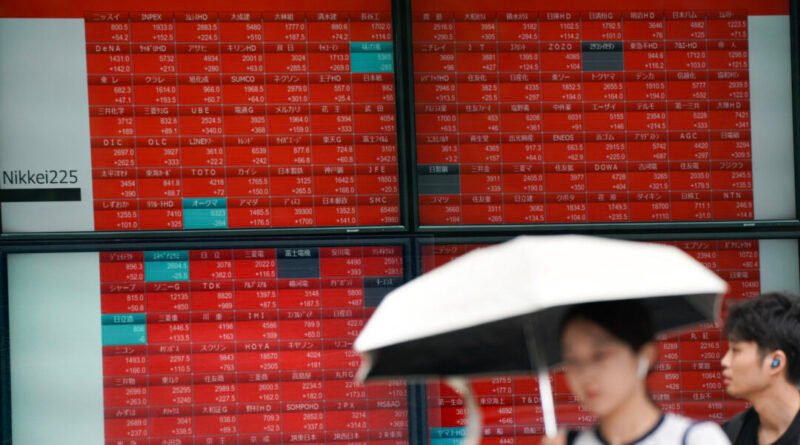Nikkei 225 Index Bounces Back in Opening Trade Following Record Drop
On Aug. 5, Japan’s Nikkei 225 plunged 12.4%, or 4,451.28 points, marking the worst one day selloff in its history 74 year history.
Japanese stocks have staged a noticeable comeback after experiencing the most significant market drop ever during the previous day’s trading session.
On Aug. 5, Japan’s Nikkei 225, the stock market index for the Tokyo Stock Exchange, plunged 12.4 percent, or 4,451.28 points, as investors worried about the U.S. economy dumped a wide range of shares, marking the worst daily selloff in its history 74 year history.
Only one day later, new investors with a higher risk appetite responded, pushing the market back up by over 3,200 points before it settled at a 2,957.90 point rise or a roughly 9.4 percent increase over the previous days’ trading. It was the largest single day rise since October 1990 when the Nikkei 225 increased 2,676.55 points. Overall, the index is still down around 20 percent from its all-time high on July 11.
Accompanying the Nikkei’s plunge, the wider stock and crypto markets are also experiencing severe volatility.
According to analyst Chris Weston, head of research at Australian online broker Pepperstone, the drop in Japan’s Nikkei 225 came off the back of “significant liquidation of margin positions.”
In a morning Aug. 6 X post ahead of the Japanese markets opening for trade, Weston said that while he was predicting a “solid counter rally” when the Nikkei 225 reopened, he still cautioned that the market volatility might not be over.
“The implied volatility in the NY225 sits at an incredible 70%—well above levels seen in 2020, and while our opening call for the Nikkei 225 suggests an open some 6% higher, this level of implied volatility almost guarantees fireworks in the price action,” he said.
“After such a furious shake-out of leveraged positioning, with Japanese banks absolutely taken to the cleaners, it will take the bravest of investors to buy into these names with any conviction.”
Japan’s banking stocks led the Aug. 5 rout. Other Japanese companies, such as Honda Motor Co., dropped by 13.4 percent, while Mitsubishi UFJ Financial Group fell by 18.4 percent, and Tokyo Electron plunged by 15.8 percent.
Finance Minister of Japan Shunichi Suzuki told reporters on Aug. 5 that the government was watching the market but said it’s “hard to say” what was behind the huge plunge in the Nikkei 225.
Stephen Dover, chief market strategist and head of Franklin Templeton Institute at Franklin Templeton, said that in his view, the collapse was a “reminder that it is next-to-impossible to diversify equity risk by region (or by sector or style) during major corrections or bear markets.”
He also cautioned that while “opportunity will arise,” in his view, it’s “premature to step in at this point.”
This report is meant for general informational purposes only and should not be construed or interpreted as investment advice. The Epoch Times does not provide investment, tax, legal, financial planning, estate planning, or any other personal finance advice. The Epoch Times holds no liability for the accuracy or timeliness of the information provided.
Jack Phillips and Reuters contributed to this report.






